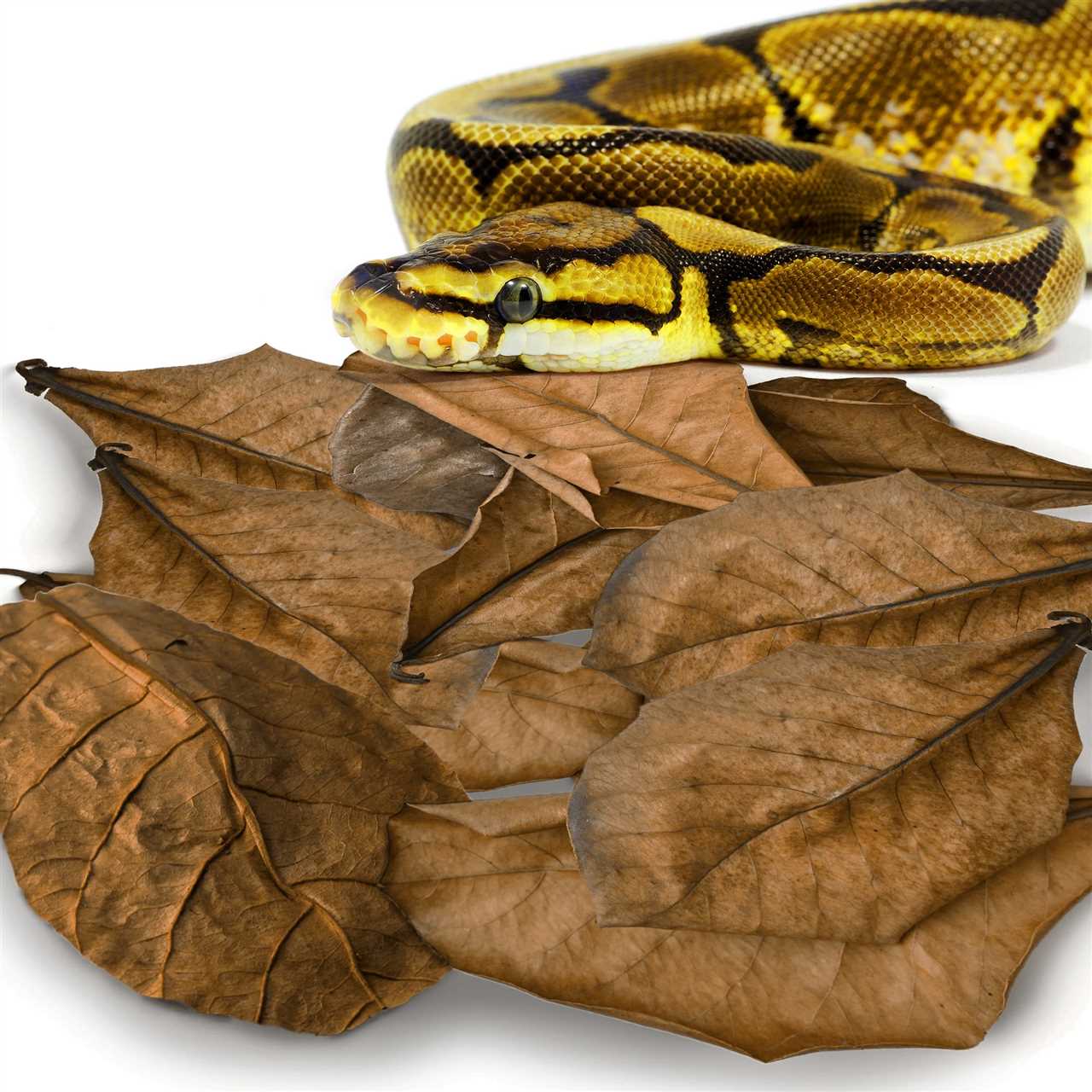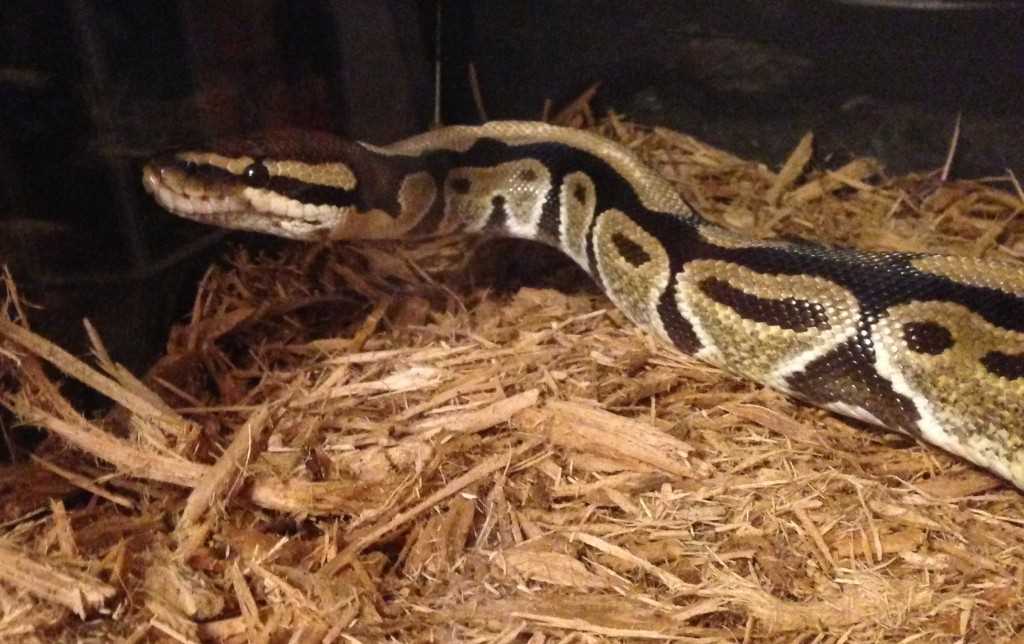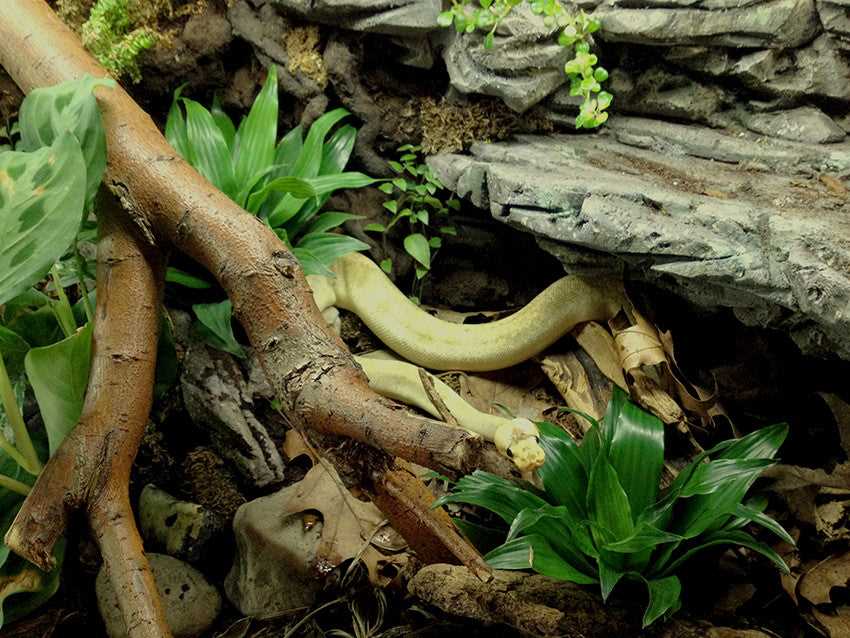Choosing the right substrate for your ball python’s enclosure is crucial for its comfort and overall well-being. The bedding you select will not only provide a comfortable surface for your snake to rest on, but it will also help maintain proper humidity levels and assist in waste management.
There are several different substrates available for ball pythons, each with its own unique benefits and considerations. One popular option is wood shavings, such as aspen or cypress. These substrates are highly absorbent, helping to control odors and prevent the growth of bacteria. Additionally, they provide excellent insulation for your snake’s enclosure, keeping them warm and comfortable.
Another option to consider is dirt or soil-based substrates. These substrates mimic the natural environment of ball pythons and allow for natural burrowing behavior. They also help to maintain humidity levels, which is essential for the health of your snake’s respiratory system. Be sure to choose a substrate specifically made for reptiles, as regular garden soil may contain harmful bacteria or parasites.
Mulch-based substrates, such as coconut husk or cypress mulch, are also commonly used for ball pythons. These substrates provide a naturalistic appearance and are highly absorbent. They retain moisture well, which helps to maintain adequate humidity levels in the enclosure. However, be cautious of using certain types of mulch that may contain oils or toxins harmful to reptiles.
Ball Python Substrate Overview
Choosing the right substrate for your ball python is an important decision, as it directly impacts their comfort and overall well-being. There are several options available, each with its own advantages and disadvantages. Let’s take a closer look at some of the most popular substrates used for ball pythons.
| Substrate Type | Description | Pros | Cons |
|---|---|---|---|
| Dirt | Natural substrate made of organic soil | – Provides a natural and comfortable environment for ball pythons
– Allows for burrowing and digging behavior – Helps maintain humidity levels in the enclosure |
– Can be messy and difficult to clean
– May require frequent replacement – Can harbor bacteria and parasites if not properly maintained |
| Sawdust | Wood shavings commonly used as bedding | – Provides a soft and comfortable surface for ball pythons
– Absorbs moisture and helps control odor – Easy to spot-clean and replace |
– Can cause respiratory issues if dusty
– May not hold humidity well – Some types of wood can be toxic to reptiles |
| Mulch | Wood or bark chips used as a natural substrate | – Offers a natural and aesthetically pleasing look
– Provides hiding spots and enrichment opportunities – Helps maintain humidity levels in the enclosure |
– Can be messy and require frequent cleaning
– May attract mites or other pests – Some types of mulch can be harmful if ingested |
Choosing the Right Substrate for Your Ball Python
Choosing the right substrate or bedding for your ball python is an important aspect of their husbandry. The proper substrate not only provides a comfortable and natural environment for your snake but also helps maintain humidity levels and promotes healthy shedding.
When selecting a substrate for your ball python, there are several options to consider. One popular choice is dirt or soil-based substrates. These substrates mimic the natural habitat of ball pythons, providing them with a familiar environment. They also hold moisture well, helping to maintain proper humidity levels.
Another option is using various types of sawdust, such as aspen or cypress. Sawdust substrates are easy to clean and replace, and they also provide a soft and comfortable surface for your snake to slither and rest on.
Similarly, mulch can be used as a bedding material for ball pythons. Mulch substrates, like cypress mulch, have good moisture retention properties and help create a naturalistic habitat for your snake.
When introducing a new substrate, it is recommended to do so gradually, allowing your snake to acclimate to the new bedding. This helps minimize stress and allows them to adjust to the new environment at their own pace.
Natural Substrates for Ball Pythons
Dirt
Dirt is a common and easily accessible substrate that can be used for ball pythons. It provides a natural feel and allows your snake to burrow and dig as it would in the wild. Make sure to use clean, chemical-free soil that is free of any pesticides or fertilizers. Avoid using dirt that contains sharp objects or small rocks that could potentially harm your snake.
Mulch

Another natural substrate option is mulch. Mulch can be made from a variety of materials, such as cypress or coconut husk, and provides a soft and comfortable surface for your python to rest on. It also helps to maintain humidity levels in the enclosure, which is important for the overall health of your snake. Make sure to choose a type of mulch that is safe for reptiles and does not contain any harmful chemicals.
Bedding

Bedding, such as aspen or cypress wood shavings, is another natural substrate option for ball pythons. It provides a soft and cozy surface for your snake and helps to absorb waste and control odor. Make sure to choose bedding that is dust-free and does not contain any sharp edges or splinters that could injure your snake. It’s also important to regularly clean and replace the bedding to maintain a clean and hygienic enclosure.
Artificial Substrates for Ball Pythons
Artificial substrates, such as reptile carpet or paper towels, provide a clean and easy-to-maintain bedding option for ball pythons. Reptile carpet is a soft and washable material that can be easily cleaned with water and mild soap. It is also resistant to mold and bacteria, making it a hygienic choice for your snake’s enclosure.
Another artificial substrate option is paper towels. They are readily available, affordable, and easy to replace. Paper towels also make it easy to monitor your snake’s waste and overall health, as any abnormality will be easily visible on the white surface.
Artificial substrates offer a level of consistency and predictability that can be advantageous for both the owner and the snake. They provide a solid surface for the snake to move around on, reducing the risk of injury or damage to their delicate scales. In addition, artificial substrates do not retain moisture, making it easier to control the humidity levels in the snake’s enclosure.
One potential downside of artificial substrates is that they do not provide the same level of enrichment as natural substrates. Ball pythons naturally reside in forested areas and are accustomed to a substrate that mimics their natural habitat. While artificial substrates may be suitable for some ball pythons, others may benefit from the added stimulation and mental engagement that natural substrates provide.
Pros and Cons of Natural Substrates
| Pros | Cons |
|---|---|
| 1. Natural feel: Natural substrates can provide a more authentic and natural environment for ball pythons, mimicking their natural habitats. | 1. Messy: Natural substrates can be messy and require frequent cleaning and replacement to maintain a hygienic enclosure for your snake. |
| 2. Potential health risks: Natural substrates, especially those made from organic materials, can harbor bacteria, parasites, or mold that may pose health risks to your snake if not properly maintained. | |
| 3. Moisture retention: Natural substrates, such as mulch or dirt, can help retain moisture in the enclosure and provide a more humid environment, which is beneficial for ball pythons. | 3. Difficulty in maintaining temperature and humidity: Natural substrates may make it harder to regulate and maintain the ideal temperature and humidity levels in the enclosure, requiring more monitoring and adjustments. |
Pros and Cons of Artificial Substrates for Ball Pythons
Pros of Artificial Substrates

- Easy to clean: One of the main advantages of using artificial substrates is that they are easy to clean. Unlike natural substrates such as shavings, sawdust, or mulch, artificial substrates can be easily wiped clean or rinsed off. This makes maintaining the cleanliness of your snake’s enclosure much simpler and less time-consuming.
- Hygienic: Artificial substrates are also more hygienic compared to natural substrates. Since they are made from synthetic materials, they are less likely to harbor bacteria, mold, or parasites. This can help prevent infections and other health issues that can arise from a dirty substrate.
- Durable: Another advantage of artificial substrates is their durability. They are designed to withstand the normal wear and tear of a snake’s habitat and can last for a long time without needing to be replaced. This can save you money in the long run, as you won’t have to constantly buy new substrates.
Cons of Artificial Substrates
- Lack of natural feel: One of the main drawbacks of artificial substrates is that they don’t provide the same natural feel as natural substrates. Since they are made from synthetic materials, they lack the texture and scent that a ball python would encounter in its natural environment. This may not be ideal for snakes that prefer a more naturalistic setup.
- Less humidity retention: Natural substrates like mulch or dirt have the ability to retain moisture, which can help maintain the humidity levels in your snake’s enclosure. Artificial substrates, on the other hand, don’t have the same moisture retention properties and may require additional efforts to keep the humidity at the right levels.
Safety Considerations for Substrates
When choosing a substrate for your ball python, it is essential to consider the safety of the material. While there are various options available, not all are suitable for your snake’s well-being. Here are some key factors to consider when evaluating the safety of substrates:
- Avoid toxic materials: Ensure that the substrate you choose is non-toxic and free from harmful chemicals. Materials such as cedar shavings and pine shavings can release toxic fumes that may be harmful to your ball python’s respiratory system.
- Dust-free bedding: Some substrates, like sawdust, can produce a significant amount of dust. This dust can irritate your snake’s respiratory system, leading to respiratory issues. It is always best to choose dust-free bedding options.
- Avoid sharp edges: Substrates with sharp edges, such as gravel or large chunks of mulch, can potentially injure your snake. The bedding should be smooth and free from any sharp or jagged edges that could cause harm.
- Ease of cleaning: Consider the ease of cleaning when selecting a substrate. Some materials, such as dirt or natural mulch, may be more difficult to clean and can harbor bacteria or parasites. Opting for easily cleanable substrates, like reptile carpet or paper towels, can help maintain a hygienic environment for your ball python.
- Avoid ingestion risks: Ball pythons have a tendency to investigate their surroundings by using their tongue. Some substrates, like loose mulch or small wood chips, carry the risk of being accidentally ingested by your snake. Ingesting substrate can lead to digestive issues or blockages. Choose a substrate that poses minimal risk of ingestion.
By taking these safety considerations into account, you can select a suitable substrate for your ball python that promotes its health and well-being. Remember to research and consult with experienced reptile owners or veterinarians to ensure you are making the best choice for your pet.
Safety Considerations for Substrates
Sawdust and Shavings:
Sawdust and wood shavings may seem like a natural option, but they can be problematic for ball pythons. These materials can cause respiratory issues if inhaled and may lead to skin irritation or even infection if they come into contact with the snake’s sensitive skin. It is best to avoid using sawdust or shavings as a substrate for your ball python.
Mulch:
Mulch is another substrate option to avoid for ball pythons. While it may provide a natural aesthetic, certain types of mulch can be dangerous if ingested by the snake. Some mulch types contain harmful chemicals or dyes that can be toxic to reptiles. It is safer to choose a different substrate that does not pose a risk of ingestion.
Dirt and Soil:
Using dirt or soil as a substrate may seem like a natural choice, but it has its drawbacks. Dirt can be difficult to clean and may harbor bacteria or parasites that could be harmful to your ball python. Additionally, the texture of dirt can make it challenging to maintain proper humidity levels in the enclosure. It is recommended to explore other substrate options that offer better hygiene and easier maintenance.
When selecting a substrate for your ball python, it is essential to prioritize safety and consider the potential risks associated with different materials. Opt for substrates that are non-toxic, easy to clean, and provide a comfortable and hygienic environment for your pet snake.
Tips for Substrate Selection
Choosing the right substrate for your ball python is an important decision that can impact its health and well-being. Here are some tips to help you make the best choice when selecting a bedding material for your snake:
Consider the Natural Habitat
Types of Substrates
Hygiene and Safety
Temperature and Humidity Control
Observing Your Snake
| Pros of Natural Substrates | Cons of Natural Substrates |
|---|---|
| – Provide a more natural and comfortable environment for ball pythons | – May require more frequent cleaning and maintenance |
| – Can help create a more visually appealing enclosure | – May be more expensive than artificial substrates |
| Pros of Artificial Substrates | Cons of Artificial Substrates |
|---|---|
| – Easy to clean and maintain | – May not provide the same level of comfort as natural substrates |
| – Can be more affordable | – May not provide the same visual appeal as natural substrates |
By considering the natural habitat, the type of substrate, hygiene and safety, temperature and humidity control, and your snake’s preferences, you can choose the best substrate for your ball python and provide it with a comfortable and healthy living space.

I’m Lena Adams—a product of an unconventional upbringing in the African wilderness. My father, a daring explorer of African wildlife, sparked my fascination with reptiles, a passion that intertwined with the tragic loss of my mother during an expedition, leaving an indelible mark on my life. Driven to understand the creatures that captivated my parents, I embarked on my journey, sharing insights about reptiles, frogs, and lizards on my website. Through my explorations and conservation efforts, I honour my family’s legacy while seeking connections—to the creatures, nature, and the mother whose presence I yearn to understand.
